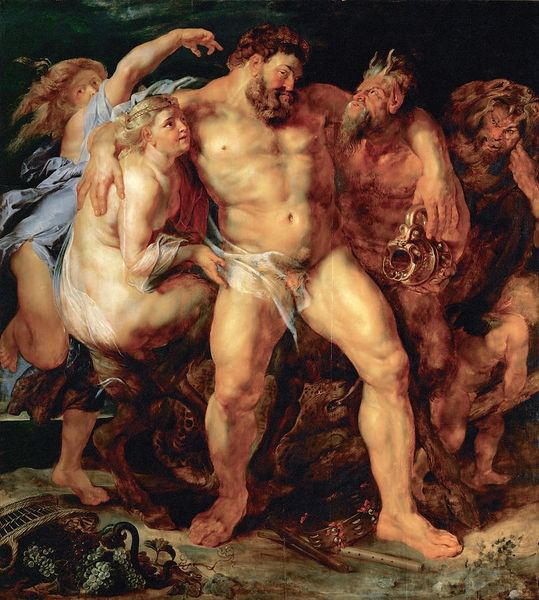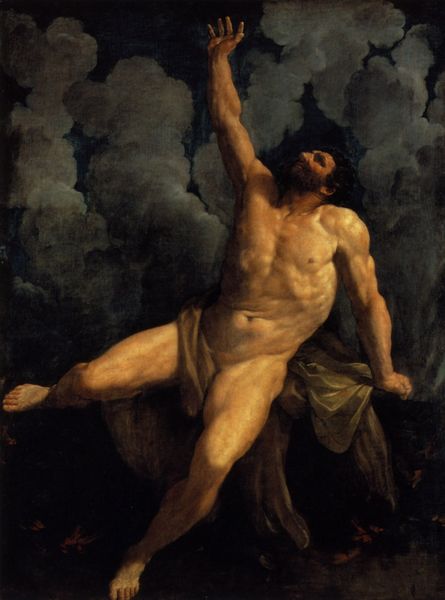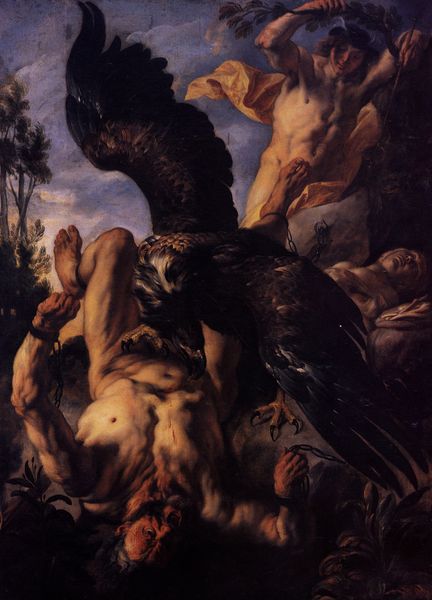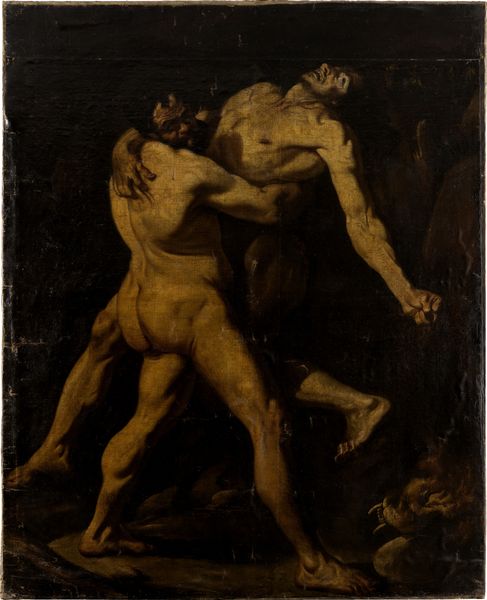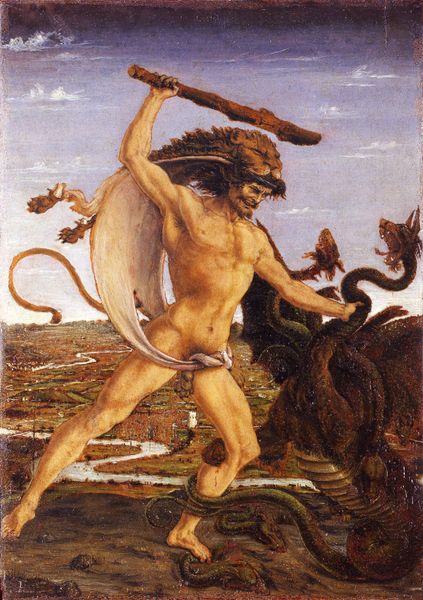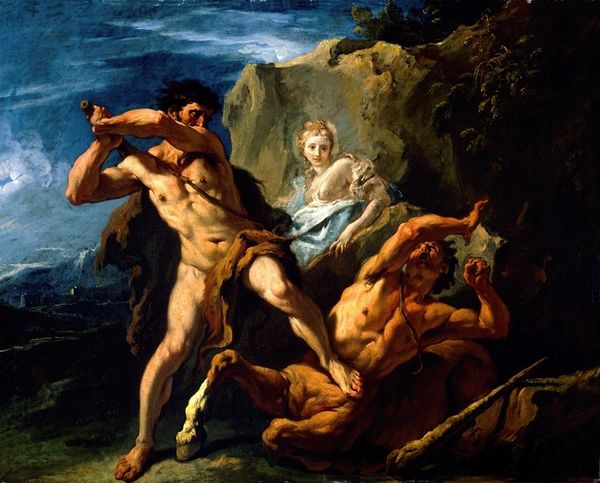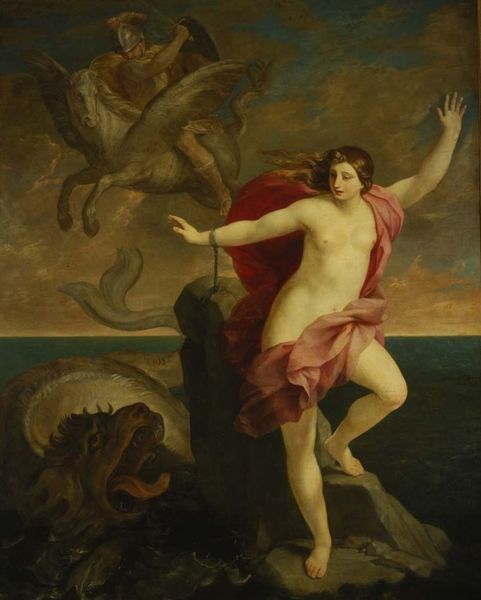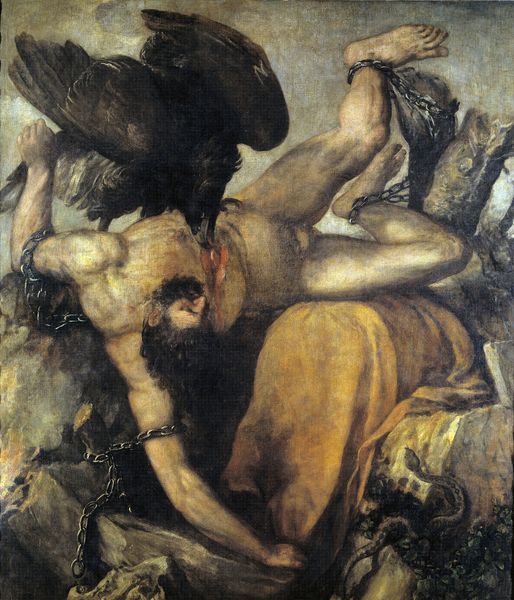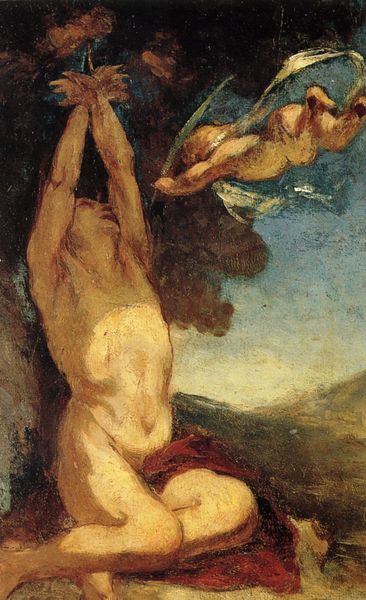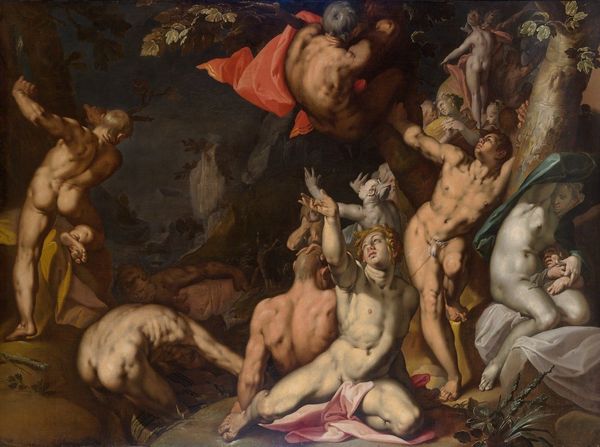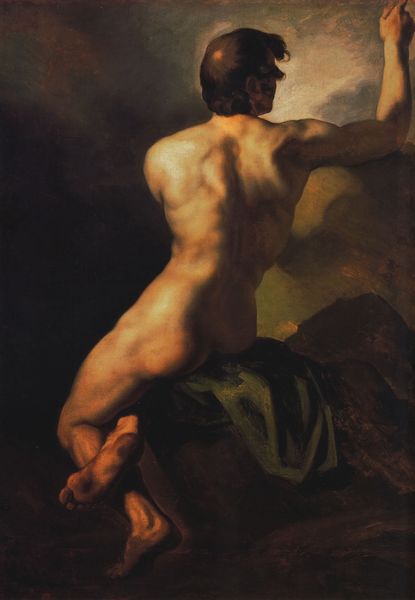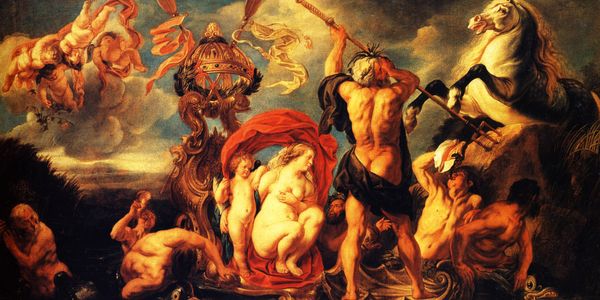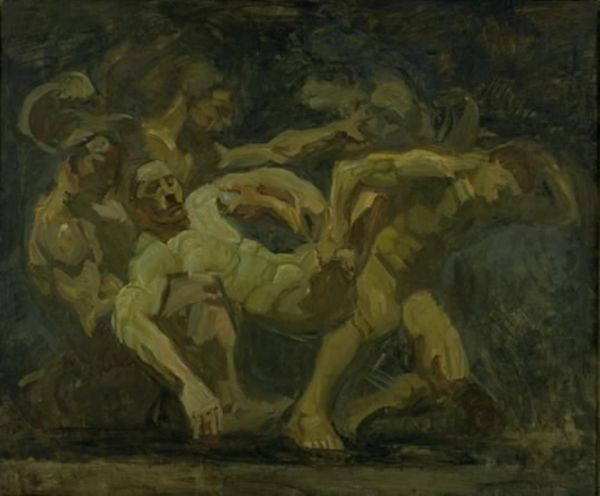
oil-paint
#
baroque
#
oil-paint
#
charcoal drawing
#
figuration
#
oil painting
#
roman-mythology
#
mythology
#
history-painting
Dimensions: 261 x 197 cm
Copyright: Public domain
Editor: So, this is Guido Reni’s “Hercules Vanquishing the Hydra of Lerma,” painted around 1620 using oil paint. It feels intensely dramatic – the tension in Hercules’ body, the writhing hydra… What statements do you feel the artwork is making? Curator: This piece embodies the Baroque era's fascination with dynamism and heroism. But let’s think about how these grand mythological scenes functioned within their historical context. Paintings like these, commissioned often for aristocratic collections, visually reinforced existing power structures, right? Editor: Right. By presenting Hercules as this almost superhuman figure, are they suggesting a similar kind of strength and authority in the patron? Curator: Precisely. Hercules wasn't just a muscleman; he represented virtue triumphing over vice, order over chaos. Think about who would want to associate themselves with that kind of imagery. How did the display of such art bolster their perceived legitimacy? Editor: It’s almost propaganda, then, using mythology to convey a political message. The hydra, a chaotic monster, is defeated by the noble hero, much like how the elite want to present themselves "defeating" the chaos and problems of society. Curator: Absolutely! Reni's composition also plays into this. Note how Hercules is brightly illuminated, dominating the darker, serpentine Hydra. It’s a calculated visual hierarchy designed to evoke a specific emotional response and, ultimately, to reinforce the commissioner's image. What do you make of the choice to place this scene in a dark cave? Editor: I didn’t think about the cave. I suppose it adds to that sense of battling something sinister in the darkness, while also isolating this act as particularly unique and challenging, something only a ‘hero’ could resolve? Curator: Indeed. And it creates a contained arena for this struggle, a microcosm of the larger societal struggle against perceived threats to established order. It’s about constructing a narrative through visual cues, framing power in a very particular way. Editor: That is a really interesting lens. I now see how it says less about Greek myths, and more about those commissioning the work at the time.
Comments
No comments
Be the first to comment and join the conversation on the ultimate creative platform.
